Overview of different loads
Let’s start with the values for the individual load states, because amD had actually made the biggest and long overdue innovation here. In both multi-monitor setup and hardware-accelerated video playback, performance levels have decreased significantly as long as the resolution is the same on all connected monitors. And even in the idle, the ASRock card with the measured 12 watts for the entire card can convince.
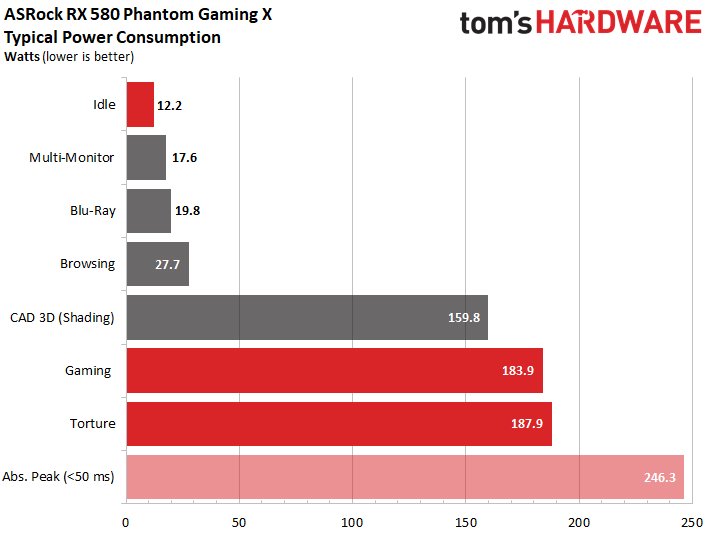
But we also see that the increased clock speed of the RX 580 has its price. In gaming, there are approx. 184 watts, are then approx. 188 watts maximum. In order to achieve such clock rates, of course, there must also be enough voltage. Let’s first look at the corresponding chart and be amazed that ASRock has managed to get relatively low values:
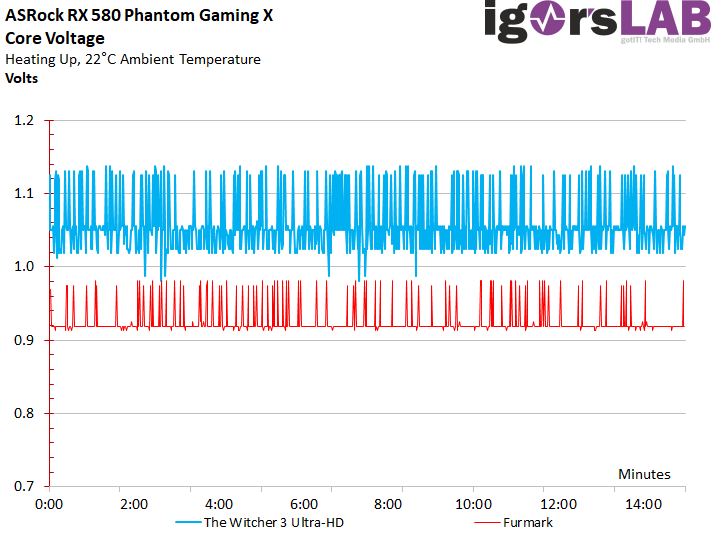
With a maximum of 1.14V and an average value of approx. 1.06V is very good in the race. ASRock has therefore deliberately dispensed with the crowbar and operates the RX 580 Phantom Gaming X in a rather conservative setting. This, in turn, can be pleasing, even if one has probably subjected one’s own cooling to the limitations of one’s own, instead of drawing the green card in the game with the environment.
Load on the individual 12V rails
Now let’s consider the maximum load of the PCI Express motherboard slot (PEG) at 12 volts. The PCI SIG sets a maximum of 5.5 amperes for the motherboard slot as the standard. This is converted to the recorded power exactly 66 watts. By the way, the often collated 75 watts are fundamentally wrong and result only from the ATX specifications, where a power supply within the scope of the tolerance could also supply a little more than 12 volts. However, the actual standard only includes the flowing currents, so that we consider the maximum 5.5 A to be binding:
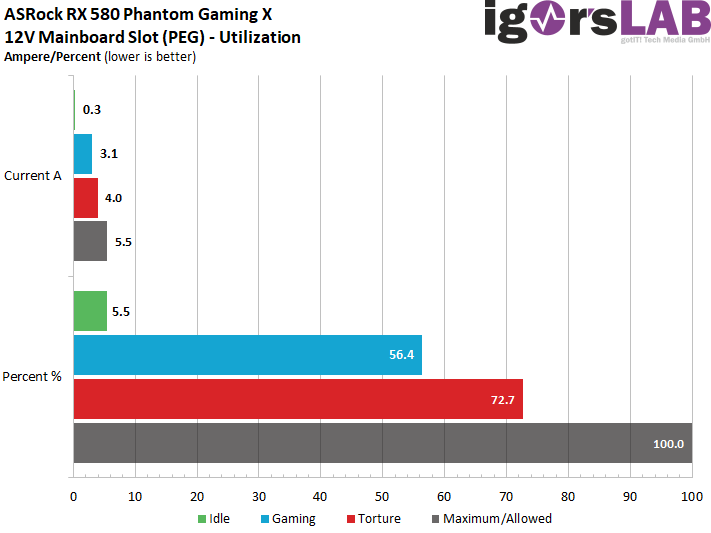
If we put the load on the motherboard together again as a bar graphic, then we can see very clearly how well the specification was met this time. It is important that the permanent load is still fully in the green area.
Power consumption and currents in detail
In the idle there are only 12 watts, which of course also has a positive effect on the flowing currents. Of course, this also suits the fan stop, which still works in the loadless state even in the closed housing.
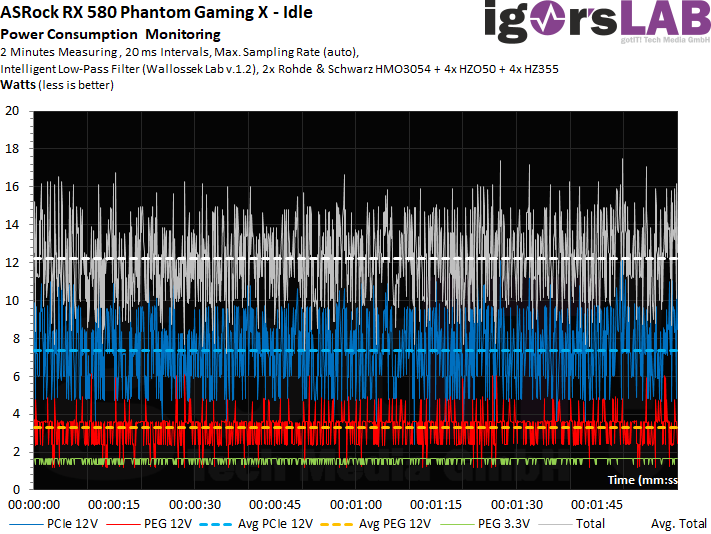 |
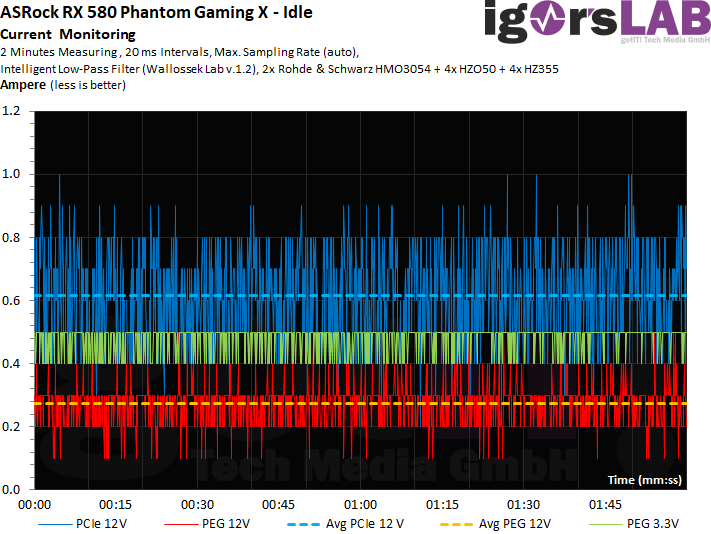 |
With the gaming loop you can see very nicely the rule rage of Power Tune, because the tips are clearly above what we measure as an average value. But it’s not something that a power supply with a properly equipped secondary side couldn’t plug away and smooth iron. Only horn-old China böller should already be sweating here.
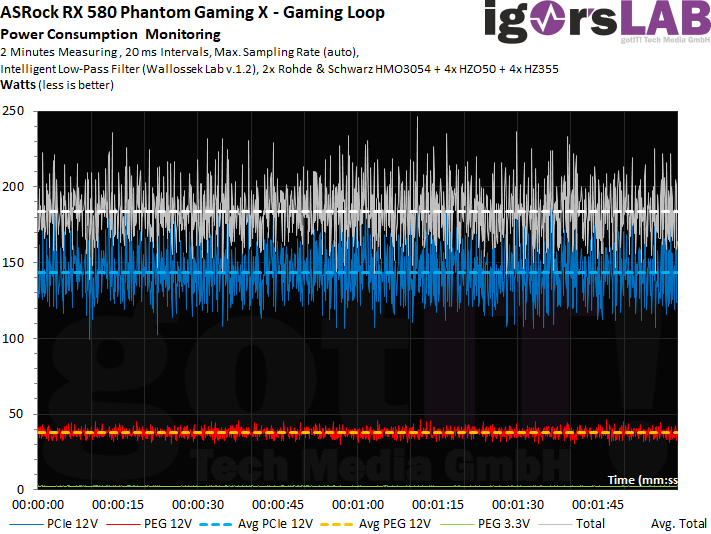 |
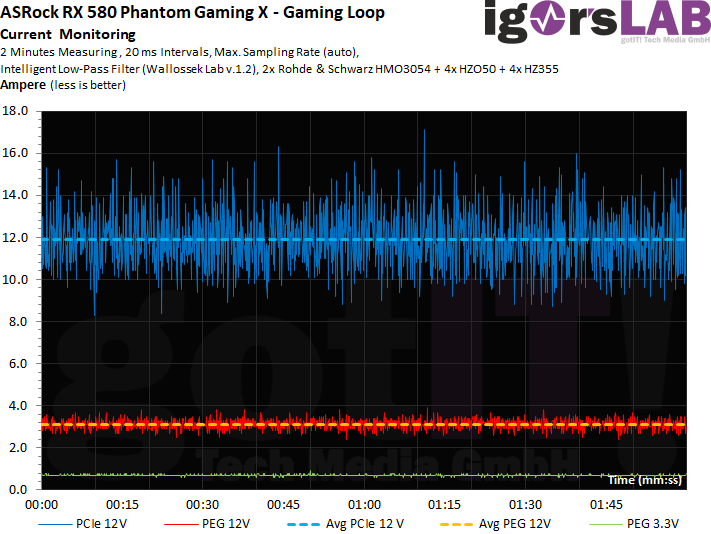 |
The Torture test then shows significantly lower rashes, as the load attached is also more constant and Power Tune leaves less room for reins. This can then be seen very nicely by the currents and the shifting balance on the motherboard slot.
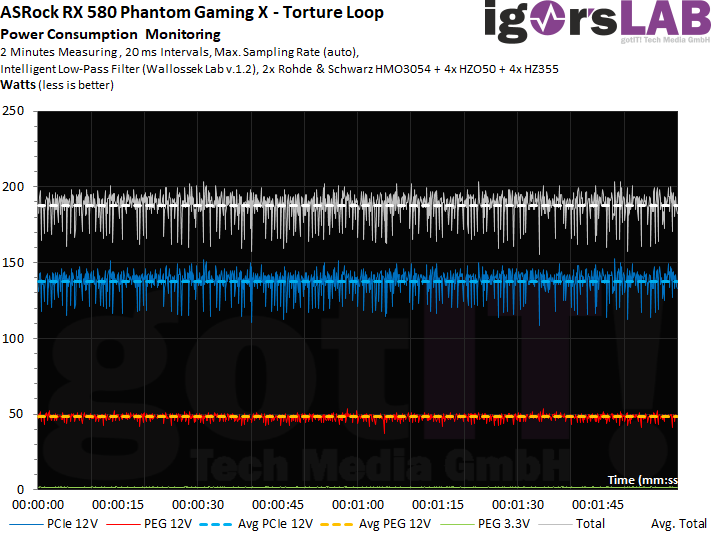 |
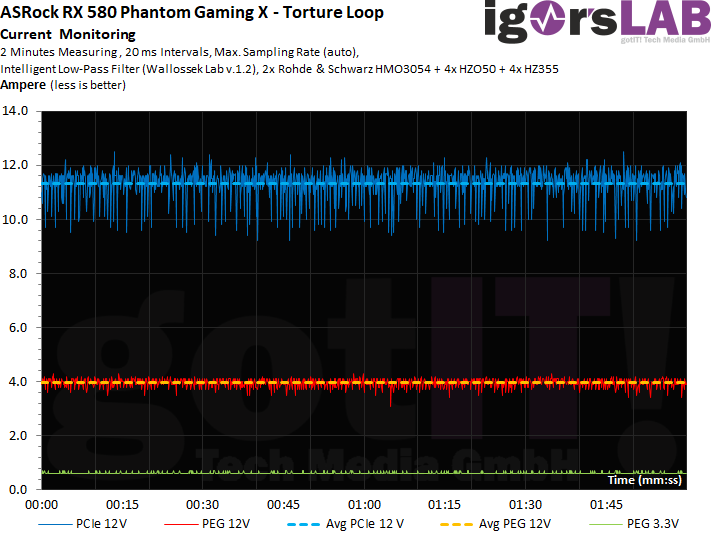 |
- 1 - Einführung, Unboxing und technischen Daten
- 2 - Platinenlayout und Spannungsversorgung
- 3 - Gaming-Performance 1920 x 1080 Pixel (Full-HD)
- 4 - Gaming-Performance 2560 x 1440 Pixel (WQHD)
- 5 - Leistungsaufnahme im Detail
- 6 - Temperaturen, Taktraten und Wärmebildanalyse
- 7 - Kühlerdetails und Geräuschentwicklung
- 8 - Zusammenfassung und Fazit































Kommentieren